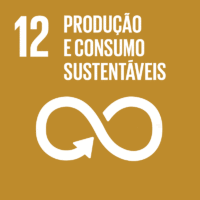Ciência_Iscte
Publicações
Descrição Detalhada da Publicação
Influence of fused deposition modeling parameters on the mechanical properties of ABS parts
Título Revista
Polymers for Advanced Technologies
Ano (publicação definitiva)
2020
Língua
Inglês
País
Estados Unidos da América
Mais Informação
Web of Science®
Scopus
Google Scholar
Esta publicação não está indexada no Overton
Abstract/Resumo
This work aims to determine the influence of fused deposition modeling (FDM) printing parameters on the mechanical properties of parts fabricated on an Ultimaker2 printer with acrylonitrile butadiene styrene (ABS). The effect of several parameters such as interlayer cooling time (ILCT), nozzle diameter, infill density, raster angle and layer thickness on the ultimate tensile strength, yield strength, and elastic modulus of produced parts was evaluated. Two independent studies were conducted: a first study dedicated to the ILCT and a second study where the influence of other parameters was evaluated through a design of experiments (DoE) approach. Both studies were carried out through the execution of standard tensile tests. The statistical analysis of tensile tests results was processed with the ANOVA methodology. The obtained results indicate that a reduced ILCT improves the tensile strength of parts. It is shown that nozzle diameter and infill density are the parameters that most influence the mechanical properties of ABS, with the upper range selected values improving the studied mechanical properties. The raster angle configuration of (−45o/45o) benefits UTS and yield strength of ABS samples. Interactions of nozzle diameter on layer thickness were detected. It was observed that smaller layer thickness promotes a higher elastic modulus and UTS; however, for thinner layers (0.06-0.10 mm), no significant differences were found on strength of samples due to potential high distortion levels.
Agradecimentos/Acknowledgements
--
Palavras-chave
ABS,Additive manufacturing,FDM,Mechanical properties,Printing parameters
Classificação Fields of Science and Technology
- Ciências Químicas - Ciências Naturais
- Engenharia dos Materiais - Engenharia e Tecnologia
Registos de financiamentos
| Referência de financiamento | Entidade Financiadora |
|---|---|
| SAICTPAC/0036/2015 | Comissão Europeia |
| UID/EMS/00667/2019 | Fundação para a Ciência e a Tecnologia |
| POCI‐01‐0145‐FEDER‐016414 | Fundação para a Ciência e a Tecnologia |
| UID/EMS/50022/2019 | Comissão Europeia |
Contribuições para os Objetivos do Desenvolvimento Sustentável das Nações Unidas
Com o objetivo de aumentar a investigação direcionada para o cumprimento dos Objetivos do Desenvolvimento Sustentável para 2030 das Nações Unidas, é disponibilizada no Ciência_Iscte a possibilidade de associação, quando aplicável, dos artigos científicos aos Objetivos do Desenvolvimento Sustentável. Estes são os Objetivos do Desenvolvimento Sustentável identificados pelo(s) autor(es) para esta publicação. Para uma informação detalhada dos Objetivos do Desenvolvimento Sustentável, clique aqui.

 English
English


